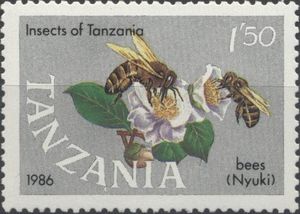Dow AgroSciences LLC, a wholly owned subsidiary of The Dow Chemical Company (NYSE: DOW), announced today that U.S. regulatory authorities have approved the new insecticidal active ingredient, sulfoxaflor to be marketed in the U.S. as Transform® and Closer™. The U.S. registration, and the recent Canadian registration, are the result of a Global Joint Review which also includes Australia. Australian sulfoxaflor registration is expected by third quarter 2013. South Korea, Panama, Vietnam, Indonesia, and Guatemala have already registered sulfoxaflor and additional global registrations are expected in the near future. Sulfoxaflor belongs to a novel chemical class called sulfoximines invented by Dow AgroSciences and offers extremely effective control of many important sap-feeding insect pests. It can be used in a large number of major crops, including cotton, soybean, citrus, pome/stone fruit, nuts, grapes, potatoes, vegetables and strawberries.
The water solubility of sulfoxaflor is very similar to that of imidacloprid, and both compounds may cause long-term adverse effects in the aquatic environment (R53). A short summary of the scientific justification for the Harmonized Classification and Labelling (CLH) proposal for sulfoxaflor (attached):
Human Health CLH proposal justification:
R22/H302 (harmful if swallowed) is proposed based on the LD50 estimated in male rats (1405 mg/kg bw) and female rats (1000 mg/kg bw) and male mice (750 mg/kg bw).
Environment CLH proposal justification:
H400 (Very toxic to aquatic life) follows from the lowest acute toxicity value of the active substance for the most sensitive tested aquatic organism with LC50 < 1 mg a.s./L (Chironomus dilutus: LC50 = 0.622 mg a.s./L).
H410 (Very toxic to aquatic life with long lasting effects) follows from the lowest chronic toxicity value of the active substance for the most sensitive tested aquatic organism with NOEC ≤ 1 mg a.s./L (Chironomus riparius: NOEC = 0.0384 mg/L) and the fact that the active substance is not readily biodegradable and not rapidly biodegradable.
R50 (Very toxic to aquatic organisms) follows from the lowest acute toxicity value of the active substance forthe most sensitive tested aquatic organism with LC50 < 1 mg a.s./L (Chironomus dilutus: LC50 = 0.622 mg a.s./L)
R53 (May cause long-term adverse effects in the aquatic environment) follows from the fact that the active substance is not readily biodegradable.
Source: Dow AgroSciences, 7 May 2013
http://newsroom.dowagro.com/press-release/dow-agrosciences-receives-us-…

- Log in to post comments
